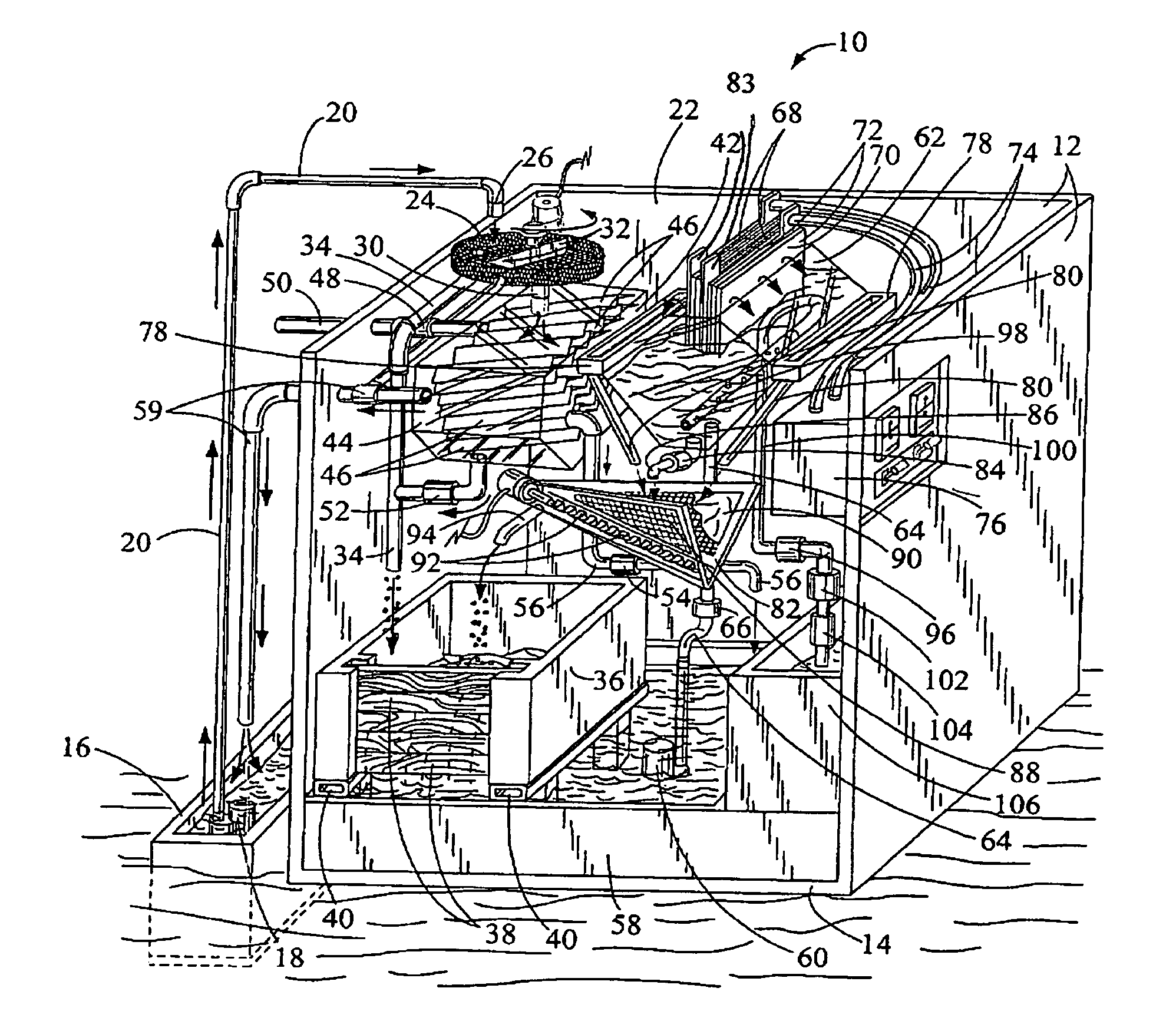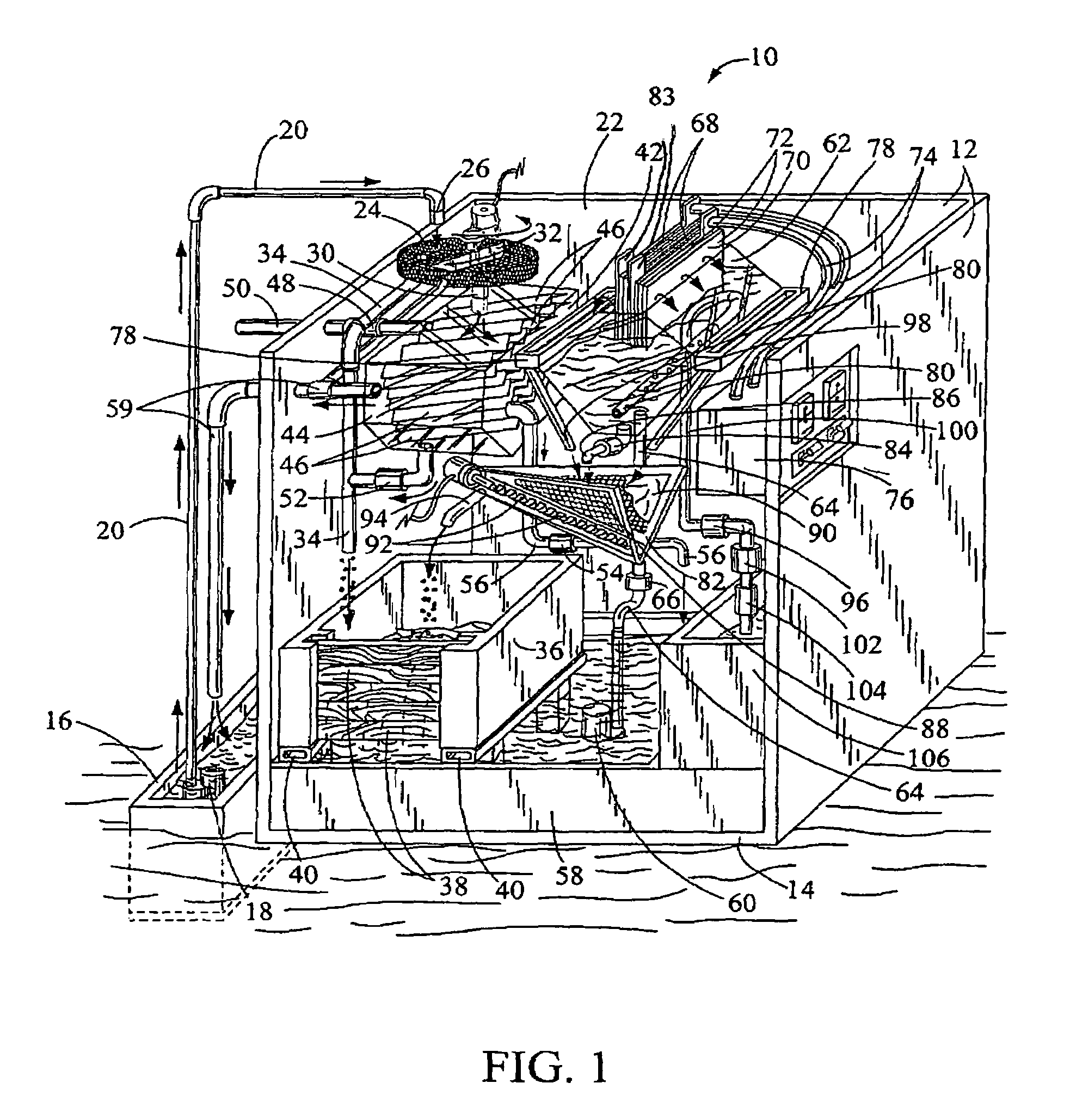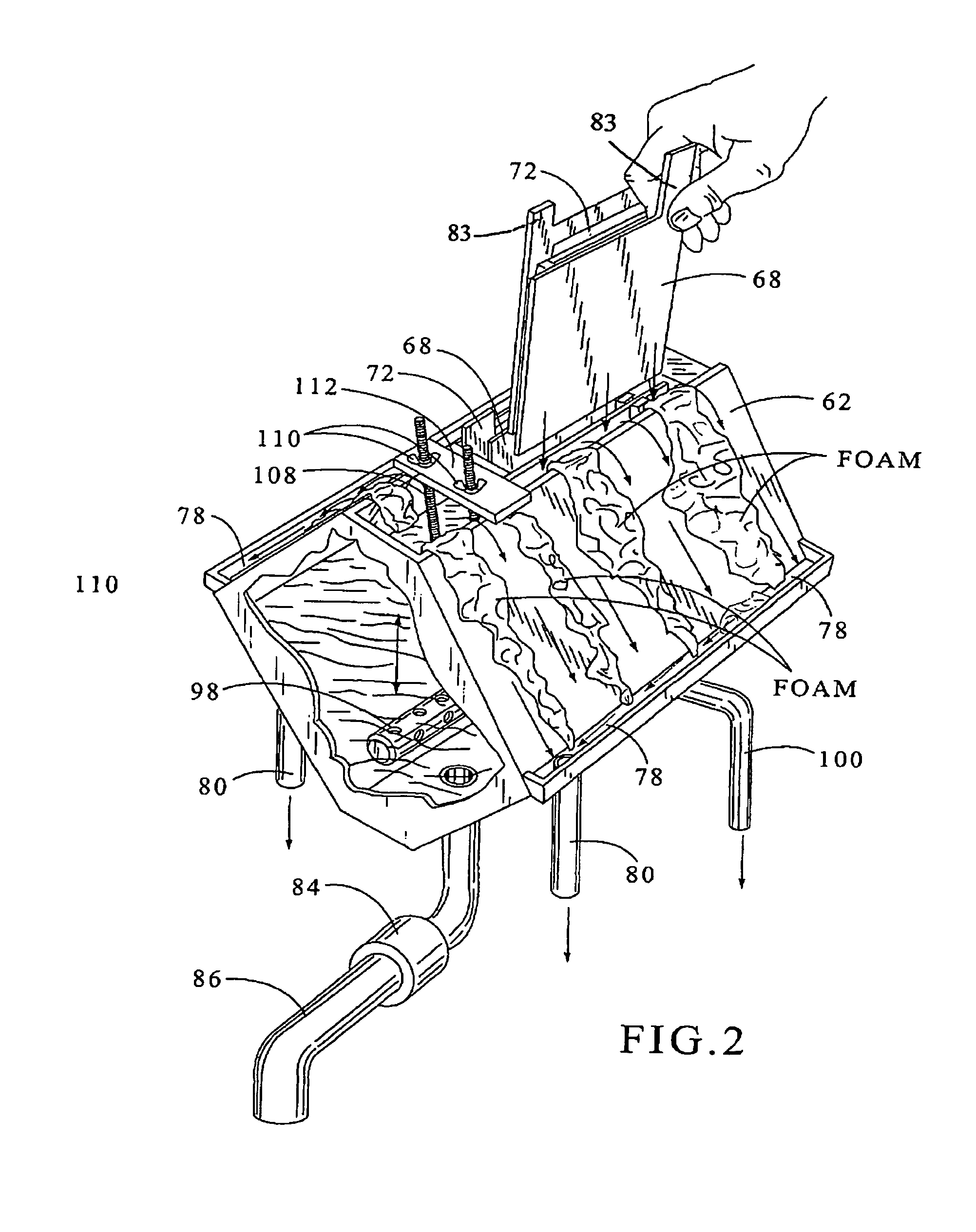Electrocoagulation waste water batch tank treatment system
a waste water batch tank and electrocoagulation technology, which is applied in the direction of settling tank feed/discharge, machine/engine, settling tank feed/discharge, etc., can solve the problems of affecting the treatment process, scaling and plugging of electrodes, and preventing them from being viable treatment for large, complex and variable waste streams, etc., to reduce the contaminate level in the water, reduce the need for pumping, and easy to change out
- Summary
- Abstract
- Description
- Claims
- Application Information
AI Technical Summary
Benefits of technology
Problems solved by technology
Method used
Image
Examples
Embodiment Construction
[0025]In FIG. 1, a perspective view of the individual components making up the subject electrocoagulation waste water batch tank treatment system is illustrated. The overall treatment system has a general reference numeral 10. As mentioned above, the system 10 is used for treating and cleaning waste water circulated through the components mounted in a batch tank 12. The front and the top of the tank 12 have been cutaway for ease in viewing the individual components mounted therein. The batch tank is designed to typically treat 50 to 2500 gallons of waste water and can have dimensions in a range of 2 to 8 feet in width, 4 to 24 feet in length and 4 to 10 feet in height. A bottom 14 of the tank 12 can be adapted for mounting on skids for ease in transporting the unit from one location to another and treating different sources of water.
[0026]In this drawing, waste water is received in a waste water sump 16 or a buried waste tank next to the batch tank 12. Obviously, the waste water can...
PUM
| Property | Measurement | Unit |
|---|---|---|
| length | aaaaa | aaaaa |
| width | aaaaa | aaaaa |
| width | aaaaa | aaaaa |
Abstract
Description
Claims
Application Information
 Login to View More
Login to View More - R&D
- Intellectual Property
- Life Sciences
- Materials
- Tech Scout
- Unparalleled Data Quality
- Higher Quality Content
- 60% Fewer Hallucinations
Browse by: Latest US Patents, China's latest patents, Technical Efficacy Thesaurus, Application Domain, Technology Topic, Popular Technical Reports.
© 2025 PatSnap. All rights reserved.Legal|Privacy policy|Modern Slavery Act Transparency Statement|Sitemap|About US| Contact US: help@patsnap.com



